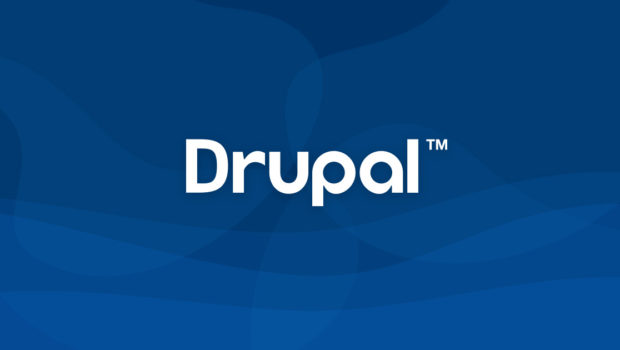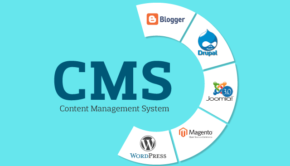6 Things About Drupal That You Should Know in 2021
Advancements in technology have brought changes in consumers’ demands; they currently desire more intuitive, quick, and fluid user experiences. Statistically, 46% of users utilize smartphone devices, 50% use desktop-based options, and 4% use tablets globally. Therefore, brands are more focused on creating applications and web services with omnichannel support to reach a wider consumer base.
For developing dynamic digital services, brands must use a reliable content management system (CMS) with flexible tools, scalable features, and a secure structure. In this context, the Drupal CMS platform is a high-grade choice for creating robust enterprise-level and even small-scale websites. Statistically, over 1.7 million websites are currently running on Drupal; many brands depend on this platform for its extensible and responsive functionality.
This article will give you a clearer understanding of the Drupal development and reasons for why to use Drupal in 2021.
What is Drupal?
Drupal is a free, open-source CMS platform that brands can use for website and application development. Overall, the platform offers flexible features, scalable infrastructure, and it is quick to implement. Moreover, brand owners can find ready-made tools and libraries, community codes, and secure frameworks for software development.
There are modules present in this platform that developers can apply directly or customize to meet their brand requirements. Statistically, there are around 46,350 modules available for Drupal users to adopt. This improves the development process and reduces overall app development time and cost.
To be specific, drupal development services are mainly useful for brands that are creating enterprise websites (though small businesses can also use it for the same). It is because of its multiple content authoring feature, security, and capacity to handle heavy content. However, it is important to mention that it is not simple to use for developers with zero Drupal knowledge or skills.
Drupal Strategies To Focus On In 2021
The following are some of the available services and strategies for Drupal website/app development in 2021.
Decoupled Menus
Originally, the HTTP APIs in Drupal did not include menu link support; developers could not remove, rename, or reorder the components in customized menus. Therefore, front-end developers had to implement hard coding for site navigation. Typically, this put off many brands from using Drupal as it did not solve their development issues.
Thus, Drupal introduced the Decoupled Menus initiative in 2020 for front-end API integration and documentation. Indeed, the JavaScript developers can quickly use the Drupal-centric decoupled menus for their website front-end and remove unnecessary codes. Hence, it is easier for brands to build their navigation structure without excess coding and ensure quicker deployment.
Community Support
Drupal users can gain access to the dynamic community of Drupal developers and other Drupal users. Indeed, the community structure stretches globally, and groups connect over shared interests, topics, and Drupal services. Also, the community members often contribute reliable and unique codes.
All users can access and utilize these codes and modules for their development projects and gain supportive insights as well.
Marketing Tools Integration
Brands require CMS support to promote dynamic content over omnichannel platforms easily. Drupal is a usable option in this context; the platform stays up-to-date on new customer engagement and e-commerce sales trends.
Indeed, this CMS platform offers a Google Analytics module that brand owners can use to gather customer data securely. Statistically, 321,540 Drupal development projects utilize this module for better data collection and site optimization. With this information, the development team can optimize their website to fulfill customer interaction requirements and engage with target audiences.
API-centric Scalability
To enhance the digital experience of users with their web services, brands must focus on utilizing robust, user-friendly APIs. Drupal’s newest versions, 8 as well as 9 contain many valuable APIs with extensible capacity. Indeed, examples include:
- Render API- It offers better caching and quicker page rendering capability to a website.
- RESTful Web Services API- This Drupal 8 API integrates with web services, boosts better communication between a Drupal site and native apps, and works with decouples sites seamlessly.
- Translation API- Available on the Drupal 8 CMS platform, users can change the website language as per their geographical location with this API. Overall, there are 100 language options available, and statistically, Drupal users can run 3 languages simultaneously.
- JSON: API- This module is effective for JSON-based communication and serialization.
Overall, with the help of available Drupal APIs, micro-service models, and GraphQL integration, brands can add different features and tools to their development projects.
Automated Updates
Brands can use the Drupal contributed module, Automated Updates System, for a quick website or mobile application up-gradation. Indeed, the sites on Drupal are complex, and updating the software manually can take up a lot of time, effort, and cost. Here, the automated updates module ensures that a site updates on its own quickly and seamlessly.
Mostly, this contributed module is useful for small-scale companies or startups that are utilizing Drupal development services. Generally, they have limited resources, time, and expertise to configure website optimization manually.
Note that the contributed module is not present in the Drupal core and the development team has to perform particular actions.
- Checking if the site is secure for update
- Package signing verification of updates
- Composer integration
Apply the updates in a manner that allows developers to adjust them quickly if there are errors
Customer-Centric UI Design
Brands that use Drupal development services for their website development project(s) can provide high-quality personalized UI design to their customers. Indeed, you would notice many user-friendly and intuitive modules (contributed and built-in) for UI optimization. Some of them include:
- Personalization: Modules like Personalization Module, Context-Menu Block, and Commerce Recommender allow users to add custom content as per their preferences.
- Flexible Layout: The Drupal tool named Layout Builder Module includes reusable designed content for marketing. Also, the design elements in the tool are useful for developing flexible landing pages.
- Build-in Block System: Drupal includes a range of drag-and-drop blocks (images, texts, etc.) for quicker UI design arrangement.
- Better Caching Capacity: Brands can use BigPipe and similar caching optimization modules to enhance page load speed and performance.
Conclusion
All in all, business owners interested in using the Drupal CMS platform can expect multiple effective services here. Indeed, the platform is suitable for big content sites, has a secure infrastructure, and includes multiple useful tools/modules. Overall, you can optimize and expand your web services properly with Drupal support and reach more consumers.
About Author

Abhishek Dhariwal is a Chief Technical Officer at AddWeb Solution, an Enterprise Web Development Company. He has worked on 100+ drupal projects and has been a core contributor in the Drupal community. Vivid Tennis Player | Electronics Geek | Father Of Two Loving Kids.









![9 Ways to Use FOMO Marketing to Increase Sales [Infographic]](https://technofaq.org/wp-content/uploads/2019/11/ways-to-use-fomo-marketing-to-boost-sales-150x150.jpg)





